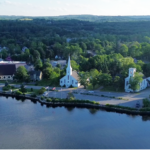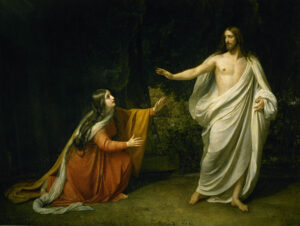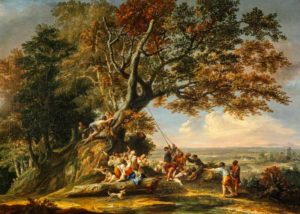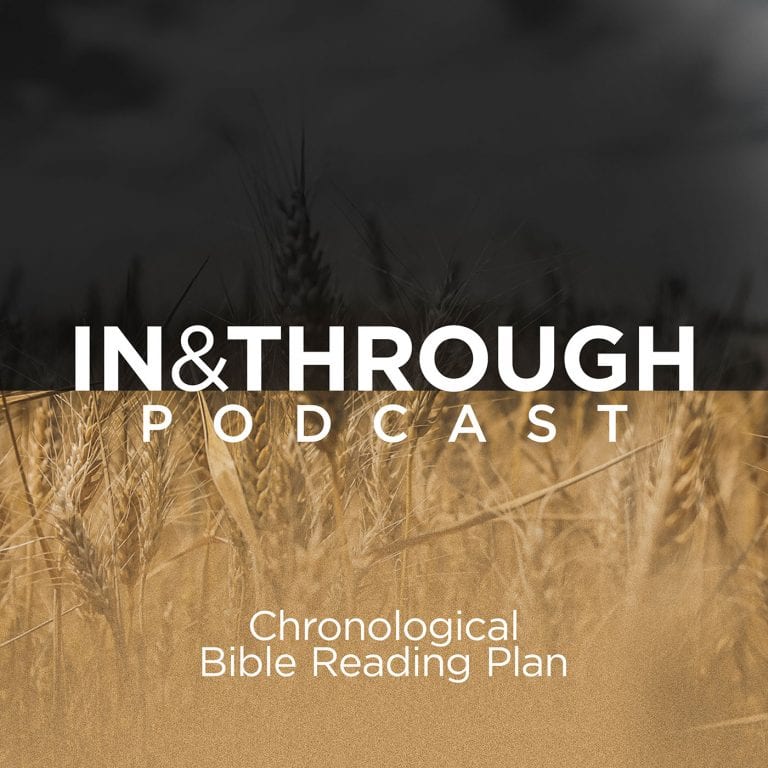There’s a lot of talk about re-enchantment in some circles. But what is this term trying to describe? Simply put, it’s the feeling and experience that the spell of secularism is breaking and that its hold on our culture is slipping.
A Story
Here’s how I might tell it as a story. The world lay cold and grey under a thick fog of atheistic materialism. Everything had a natural cause, our brains were just computers, our societies akin to glorified chimpanzee families, and all religious beliefs no more than comforting group superstitions. The big questions had been answered and all that was left was to mop up a few last details about this or that subatomic particle. Every phenomenon could and should be explained by prosaic material causes, and any resistance to this mentality was a laughable delusion. Even if this was not held by all, it was the cultural air we breathed in the West.
And then, slowly at first—then quickly, the fog started clearing.
The natural causes proposed to explain the beginnings of the universe and biological life became less plausible, not more. These beliefs went from confident certainties, to preferred models, to hollow rhetorical tricks. Even the ancient history of mankind, the central tenets of which were enshrined within various disciplines over a century ago, became less certain, not more, as new discoveries disrupted the mainstream paradigms.
The brain, long assumed to be the source of consciousness, refused to yield its deepest secrets. Such was the mystery of consciousness that a number of scientists concluded that it cannot be merely biological. And if not biological, then what? Strangest of all, we found many prominent and erudite atheists and agnostics starting to argue publicly that religious beliefs are not only a positive good for individuals and society but also that they personally wish they could believe.
But more than these shifting beliefs, there was the sense that the universe was throbbing with mysteries and entities; and experiences which defied all prosaic explanations.
The tide of faith, it seems, was rising again. But faith in what?
An Opportunity
One important thing to note is that this deep shift taking place, while certainly fascinating, is not necessarily good. People may be dissatisfied with the salt water they’ve been drinking, but unless they find the living waters of Christ, they are not ultimately better off, as we see from the rapid growth of occult practices and paganism. But here’s the positive aspect we do need to recognize: it is an opportunity. The shift away from one thing involves the search for something else, and that is the moment we are in.
While much attention has gone to high-profile conversions towards Orthodoxy and Catholicism, there are signs that Protestant evangelicals are seeing a surge of new converts and seekers as well. I gather this from anecdotal conversations and reports coming from across North America of churches seeing record attendance and a wave of people positively primed to embrace Christ and the church. And I also meet them in my own church. The old skepticism, the angst about believing in ‘myths’ and miracles, is not found in such people. Rather, they have had their fill of the nihilism and moral chaos that atheism produces, and they want something transcendent and supremely good to believe in and build their lives on.
So this has me thinking: How well is Protestant evangelicalism equipped to meet this opportunity? What distinctive resources can it bring to bear upon this wave of spiritual interest? And what do we need to shore up to make the most of this providential moment?
Aaron Renn recently addressed this very question as he discussed Jordan Peterson and what the church can learn from his appeal. He exhorted churches to lean into re-enchantment:
“This is a big reason why the Eastern Orthodox church has such an appeal today. Hyper-rationalistic Protestant theology or the emotion laden evangelical style don’t speak to this longing to reconnect with an enchanted world. I do believe in our modern, scientific era, we’ve lost parts of the genuine Christian life and experience. People who dismiss reenchantment will miss out on opportunities for evangelism. The symbolism in scripture is a good place to start.”
I agree with this assessment. However, in his follow-up post, where he sought to make a case for Protestant re-enchantment, Renn shared two stories of providential leading and provision from his personal life. And while those are perfectly valid examples of God’s hand in one’s life, there was nothing distinctly Protestant about it. So I threw the question over to some friends—what are some ways that evangelical Protestantism provides distinctive experiences of a re-enchanted world? The ensuing discussion bubbled up a number of good examples that illustrate both where we have much to offer and also where we have work to do.
Prophetic Preaching
There is definitely something transcendent about experiencing a prophetic sermon; truth on fire. Some of that glow remains even when such sermons are read centuries later, as the enduring popularity of Spurgeon’s sermons shows. Sitting under that kind of Spirit-empowered preaching is an experience of the sublime and the holy—the Great Awakening and other revivals testify to the life-altering power of that kind of preaching.
Is this kind of preaching just more “hyper-rationalistic Protestant theology,” in Renn’s words? No—it is a mistake to think that because a sermon contains propositional truth, it is reducible to that. To sit under a George Whitefield, John Wesley, Charles Spurgeon, Lloyd-Jones, or even many excellent contemporary preachers, is to have such an encounter with the Word, and with the living God, that one is transformed “from one degree of glory to another.” In such preaching the heart, the mind, the imagination, the soul—all our faculties are caught up in the experience.
I don’t know enough about Eastern Orthodoxy or Catholicism to speak with any great authority here, but it certainly seems like the viral sermon is a Protestant artifact. We all know “Sinners in the Hands of an Angry God” refers to a 200 year-old sermon by Jonathan Edwards. To these we could add the famous “seashells” sermon by John Piper, the “shocking youth message” by Paul Washer, or a good number of others. The consistent testimony about many of these sermons is that they were used by God to effect radical change, repentance, and redemption in people’s lives. If this isn’t heaven breaking in, I don’t know what is.
Normal Supernatural Church Life
Evangelical churches at their best reveal the presence and power of God in the personal relationships of their congregants: the meals brought to a family with a newborn baby or a child in the hospital; the person prompted by the Spirit to leave an unmarked envelope with cash for a family in need—answering their prayers for provision to the dollar; the older businessman taking an evening to sit with the new couple and explain the basics of budgeting; the genuine friendships forged across all the lines that normally keep us divided—from different generations, different cultures, different politics, and different social classes; the quiet hand-on-shoulder after-service prayers that occur every Sunday—lifting, encouraging, building one another up. Let us not lose sight of the supernatural beauty of normal church life.
For congregational churches, there is another element that defies human explanation: the Members’ Meeting. I don’t mean the acrimonious ones where selfish ambition and defensiveness are on display. Rather, I’m thinking of when the gathered body of members of a local church discuss and pray and vote with a humility and a unity of spirit and direction. Sometimes the import of such meetings become clear only in hindsight, but we should rightly recognize a divine presence and guidance in such moments. What a comfort and encouragement to know the Spirit has guided and united this body of believers beyond what was humanly possible.
Also, churches with a sacramental (often called spiritual presence) view of the Lord’s Supper, as opposed to purely memorial, have an advantage here as well, for they believe and teach that there is a real spiritual presence and union occurring during the ordinance. And speaking of the sacramental, we now turn to an area of relative weakness in the evangelical Protestant church.
Imagination and Art
Evangelicals in the 20th century largely followed the secular culture in adopting a spirit of disenchantment towards the created world. There were lonely prophets modeling and exhorting us to a better path, but it almost seems like their words have only really seeped into the consciousness of evangelicals in the 21st century. I speak of Chesterton, still an Anglican at the time when he wrote Orthodoxy and Manalive—my personal favourite of his novels—both of which aim at getting the reader to gasp in fresh childlike wonder at the world God made. And of course C. S. Lewis, who taught us to recognize that while stars are made of flaming gas, that is not what they are.[1] In his Ransom Trilogy he explicitly set out to re-enchant our view of the starry heavens above by way of a recovered medieval cosmology, mixing in enough spiritual warfare to make Ted Dekker proud. It’s no accident that these two figures were deeply rooted in a pre-modern way of seeing the world.
It was a Catholic poet, Gerard Manley Hopkins, who best captured what some have called a ‘small-s sacramental’ view of creation: “The world is charged with the grandeur of God.” This broad vision—that all of creation reflects and reveals the grandeur and glory of God—is not one that captured the collective evangelical Protestant imagination. And since our perception of the world is directly linked to our ability to produce imaginative art, such as music and literature, it is no surprise that the evangelical church has not been known for its excellence in artistic fields, and that those growing up within our churches with strong inclinations and gifts towards such endeavours often found themselves oddly out of place, misunderstood, and unappreciated.
If they remained believers, many of these found homes in Catholicism or Orthodoxy, such as the artist and cultural commentator Jonathan Pageau, who was in my own French Baptist church when I was growing up, but eventually converted to Orthodoxy. He is now one of the major figures speaking directly to disenchanted moderns and helping them see the world with new eyes. I think he is doing good and important work, but I do wish our evangelical churches could become the kinds of places where an intelligent and artistic young person might feel more at home than has often been the case. Church leader, you may not be artistic—and that is fine—but is your church a hospitable place for those who are? Or does the eye say to the hand, “I have no need of you” (1 Cor. 12:21).
In this regard I think we have reason to hope. Drawing on the figures cited above and many more, there is a small and growing movement within Protestant evangelicalism working to rebuild and renew the imaginative and creative faculties entrusted to us by our Creator. To borrow language from Tolkien, they are taking seriously the call to be faithful sub-creators. A very partial list might include the artistic community of The Rabbit Room, Christianity Today’s Ekstasis journal, the Image magazine, Tish Harrison Warren’s book Liturgy of the Ordinary, Douglas McKelvey’s Every Moment Holy series of liturgies, and Andrew Wilson’s God of All Things. As many others have noticed, Christians are making better and better movies, honing the craft of rich storytelling that doesn’t feel like a sermon.
Each of these in their own ways are contributing to the project of helping Protestants discern the spiritual significance of the created world, appreciate beauty, and grow in the arts.
Spiritual Vitality
Lastly, I want to touch upon the theme of spiritual vitality. I mean this in the sense that Richard Lovelace develops in his singular book, Dynamics of Spiritual Life. He uses the term to capture the unmistakable work of the Spirit in a person or church, and the intensity of that work, tracing the historical veins and distilling the composite elements. For instance, he looks to the Moravian church in the 1700s and sees there the roots of a healthy warm-hearted pietism that is deeply relational, supernatural, and fulfilling. This emphasis on personal spiritual experience was embraced by the leaders of the Great Awakening and became a major aspect of evangelical spirituality as revival swept through the dry and dying orthodoxy of the 18th century Protestant churches.
It is my conviction that when this personal intimacy with Christ is married to intellectual rigor and strong institutions, we have some of the very best aspects of evangelicalism: spiritually vibrant, historically rooted, and reproducible for future generations. Churches such as these have much to offer the person who is ready to leave their secular materialism behind and longs for some genuine experience of the transcendent. It is in my local church, after all, that I keep meeting people coming out of the occult, New Age, and psychedelic practices. These folks have found in Jesus, and the simple reformed, Baptist evangelical flavour of our congregation, exactly what they were looking for in their spiritual wanderings. A re-enchanted world of mysticism and vague spirituality ultimately led them to what some might deride as ‘organized religion,’ but which is really just a living faith in Christ, nestled within a like-minded community we call the local church.
The Future is Bright—and Enchanted
While I’m thankful for all I’ve learned from thoughtful Catholic and Orthodox believers, I’m also very positive on the future of Protestantism. I meet evangelical pastors and leaders all the time who are thoughtful, godly, rooted in church history and the confessions, and passionate about sharing Christ.
My exhortation to the church is the same as Aaron Renn’s: let’s lean into re-enchantment and show how life in Christ supercharges the mundane with glory. Let’s highlight the miraculous events in Scripture and the miraculous power of Scripture; the mysteries and paradoxes of our faith as well as its glorious certainties. Let’s lean into our strengths: bold, Spirit-anointed preaching; a rich communal life of one-another ministry; miraculous unity amidst diversity; and a spiritual vitality that glows and warms like coals from the fire. And let’s shore up where we are weak: cultivating the creative imagination and celebrating beauty in our churches and lives.
Protestant evangelicalism is a big tent, and there are many problems to address, but it has all the resources it needs to meet this challenge and present to a new wave of hungry souls where to find bread. May the Lord help us do exactly that.
[1] See chapter 14 of The Voyage of the Dawn Treader.
























